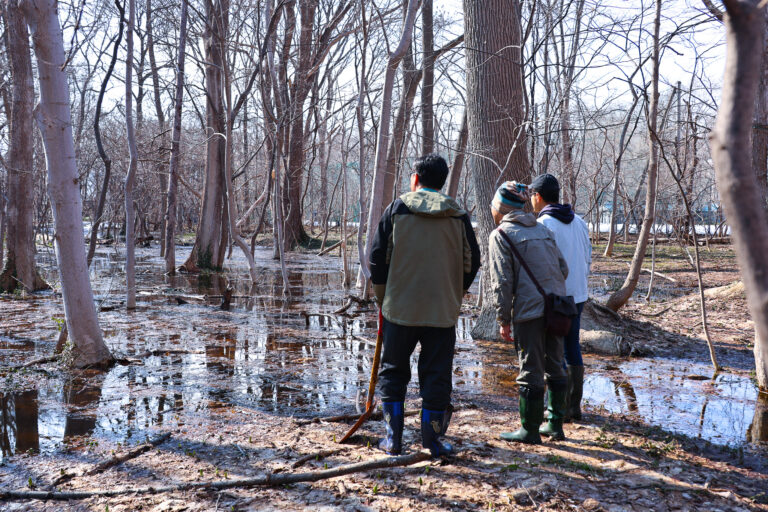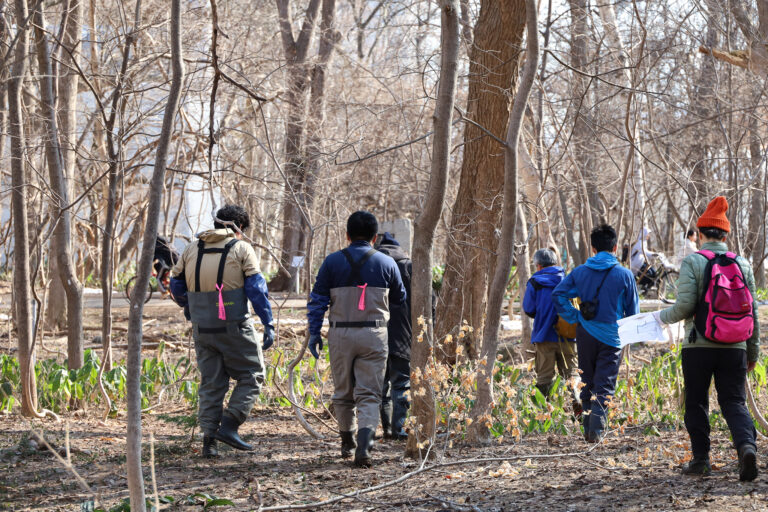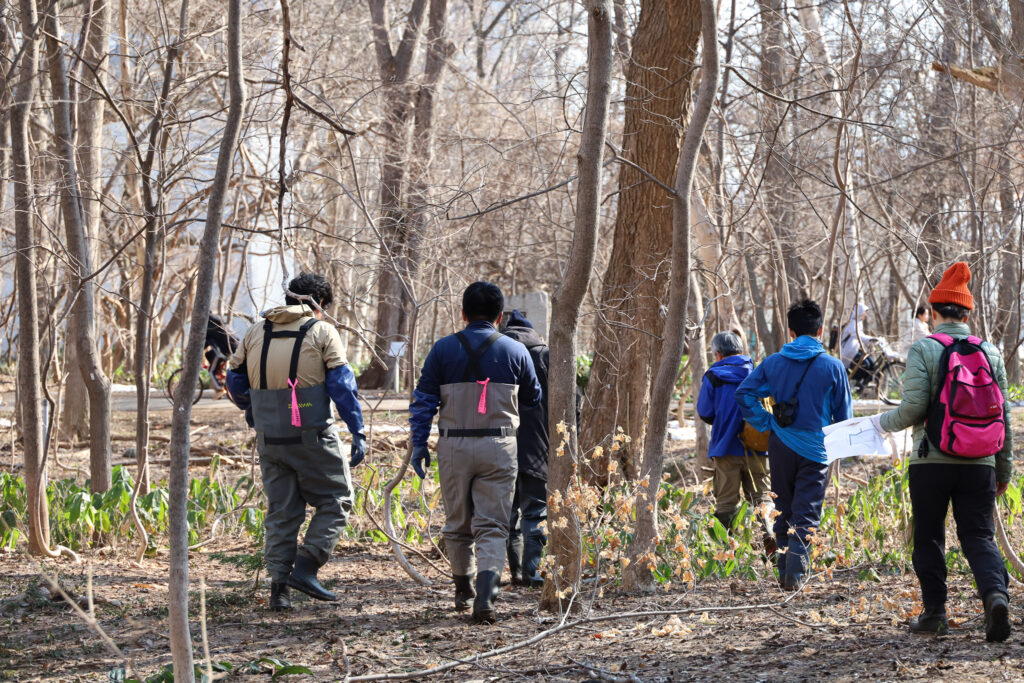Sapporo Campus is an oasis —nestled in the city, yet surrounded by rich natural beauty and home to a diverse ecosystem where many species thrive together. Within its 178 hectares, 126 hectares of well-preserved land have been officially recognized by Japan’s Ministry of the Environment as a “Nature Symbiosis Site,” and were registered in the international OECM (Other Effective area-based Conservation Measures) database in 2024.

To protect this precious environment, ecological surveys have been conducted on the Sapporo Campus since 2009. These surveys help monitor the natural environment, and the results are compiled into a database to inform conservation strategies. Among the various ongoing surveys across the campus, one survey specifically focuses on amphibians, incorporating targeted research and preservation initiatives.

In early April, as spring sunshine bathed the campus, people in waders and carrying shovels gathered for an amphibian egg-laying survey and habitat improvement work. This initiative involves checking the actual egg-laying conditions and implementing conservation measures based on past survey data. Organized by the Environment Management Working Group, which includes experts in landscaping and ecology, the event brought together faculty members, students, campus environmental management staff, and external consultants.

Participants visited multiple sites to observe amphibian egg-laying conditions. Some breeding sites, abundant with water during the snowmelt season, tend to dry up as the season progresses. On this day, eggs laid in areas likely to dry out were carefully relocated to safer spots.

These steady, hands-on efforts sustain and help pass on the rich ecosystem of Sapporo Campus for future generations.


